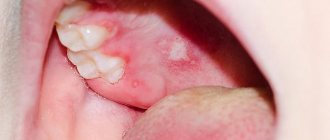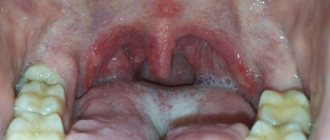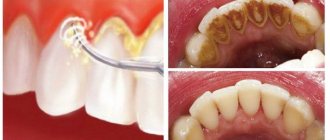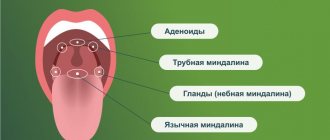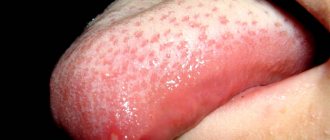How is herpes transmitted to children?
The herpes virus is very common and lives in almost all living things. It is transmitted by airborne droplets and contact . Once the herpes virus enters the body, it remains there for life. However, it can be in a “sleeping” state and not bother a person. If the herpes virus in a child has made itself felt, parents need to pay attention to this problem, because some herpes infections can take forms that are dangerous to health.
Children become infected with the herpes virus more often than adults, but overprotecting a child from infection is pointless and harmful. immunity to it . But the body is safe only in a situation where the infection is easy and without complications.
Types of herpes in infants
For babies in the first year of life, herpes comes in different types. The forms in which the herpes virus manifests itself are as follows:
- generalized;
- neurological herpes in newborns;
- localized.
In the first case, the generalized form of herpes in infants has the following clinical picture. The virus affected the internal organs and led to intoxication. The baby has difficulty breathing, he may vomit and belch, and the fever can sometimes be very strong.
With the neurological form of herpes, the virus spreads its influence to the nervous system and brain. If the infection occurred in utero, the child may have the following deviations from normal development: microcephaly, hydrocephalus, and the formation of calcifications. Symptoms here vary and are not always typical. The newborn baby appears lethargic or cries incessantly. In addition, the baby may experience a swollen fontanelle and convulsions. Localized herpes in infants. The virus appears in limited places on the child's body. These are the eyes, nasolabial area, etc.
In addition, herpes can be primary or secondary. Primary herpes in newborns can be a consequence of infection of the baby's mother during pregnancy. In addition to transmission of the virus through the placenta, the infection can be transmitted to the fetus during childbirth, when the baby passes through the birth canal. The method of entry of the herpes virus can also be domestic. A baby can become infected with the disease through the belongings of other children or through airborne droplets, as well as from parents.
How does secondary herpes develop? When an infection has entered the body of a newborn, it may not immediately manifest itself. The virus is suppressed by antibodies that the baby's mother transmits to him along with milk during breastfeeding. If the baby’s immune defense decreases, the herpes virus will be activated. In this case, the infection will spread throughout the body, approaching the skin and mucous membranes; visual manifestations of herpes will be visible as a specific rash.
The worst thing is if herpes in infants occurs on the genitals. In this case, the virus can infect the bladder and ureter. Also, such herpes, and it is called genital, can affect important internal organs, including the heart.
Types of disease in children
There are 80 types of herpes virus, of which 8 are dangerous to humans. The nature of the disease and the type of herpetic rash depend on the type of herpes simplex virus (HSV):
- Type 1 HSV - looks like cold-like rashes in the form of blisters on the lips, causes herpetic stomatitis and herpetic encephalitis.
- Type 2 HSV – manifests itself as a rash on the genitals (genital herpes).
- Type 3 HSV – causes chickenpox and recurrent herpes zoster.
- The 4th type of HSV - Epshane-Barr virus, causes malignant lymphoma and infectious mononucleosis - an acute viral disease with fever, damage to the respiratory tract, lymph nodes, liver, spleen and blood.
- Type 5 HSV – cytomegalovirus; affects the respiratory system, internal organs, intestines, eyes, brain, nervous and urinary systems.
- Type 6 HSV - causes viral eczema - exanthema - pseudorubella-type rash;
- The 7th and 8th types of HSV have not been sufficiently studied. Source: A.G. Lateral Herpesvirus infections in children - an urgent problem of modern clinical practice // Children's infections, 2010, No. 2, pp. 3-7
Herpesvirus infections in children: modern treatment options
In recent years, herpes viruses have occupied a special place among the main causative agents of viral infections in children, which is associated with their widespread distribution, wide diversity, multiple organ lesions, variety of clinical manifestations, as well as a high frequency of chronicity. Herpes-associated diseases are among the most common and poorly controlled human infections. This is due to the fact that herpes viruses can circulate for a long time asymptomatically in the body of a person with a normal immune system, and with immunosuppression, contribute to the development of severe diseases, including life-threatening generalized infections. Thus, according to the World Health Organization (WHO), the mortality rate from herpes infection is about 16% and is in second place after hepatitis among viral diseases [1].
Herpes viruses (from the Greek ?ρπειν (herpein) - to crawl) are a family of DNA viruses, united in the Herpesviridae family, which includes 8 classified types of human viruses: herpes simplex viruses - herpes simplex virus (HSV-1) and genital herpes (HSV-2), varicella-zoster virus, Epstein-Barr virus, cytomegalovirus, human herpes virus types 6, 7, 8, as well as about 80 unclassified human and animal herpes viruses. The subfamily of α-herpes viruses includes HSV-1, HSV-2 and varicella zoster virus, which are characterized by rapid replication in various cell types and have a cytopathic effect on infected cell cultures. Beta herpes viruses (cytomegalovirus, herpes viruses types 6 and 7) also affect various types of cells, lead to an increase in their size (cytomegaly), and can contribute to the development of immunosuppressive conditions. The subfamily of γ-herpes viruses includes Epstein–Barr virus and herpes virus type 8 - Kaposi's sarcoma-associated virus (KSHV). They are characterized by tropism for lymphoid cells (T- and B-lymphocytes), in which they can persist for a long time. In some cases, they can cause the development of lymphoma and sarcoma [2].
For the synthesis of viral proteins and the formation of the virus envelope, its capsid and the DNA of “daughter” virions, amino acids, lipoproteins and nucleosides of the host cell are required. As intracellular reserves are depleted, these molecules enter the infected cell from the interstitial spaces. Due to the fact that herpes viruses directly depend on the intensity of intracellular metabolism in the human body, they colonize predominantly the cells of the epithelium, mucous membranes, blood and lymphoid tissue, which have the highest metabolic rate.
Virions of herpes viruses are thermolabile - they are inactivated within 30 minutes at a temperature of 50–52 °C, within 20 hours at a temperature of 37.5 °C, but tolerate lyophilization well. On metal surfaces (coins, door handles, water taps) herpes viruses survive for 2 hours, on plastic and wood - up to 3 hours, on wet medical materials (cotton wool and gauze) - until they dry at room temperature (up to 6 hours ). The uniqueness of herpes viruses lies in the fact that they are capable of continuously or cyclically multiplying in infected cells of tropic tissues (persistence), as well as being preserved for life in a morphologically and immunochemically modified form in the nerve cells of regional nerve ganglia (latency) and being reactivated under the influence of various exogenous agents. and endogenous provoking factors. However, the ability for persistence and latency varies among different strains: the most active in this regard are herpes simplex viruses, the least active is the Epstein-Barr virus.
According to numerous studies, by the age of 18, more than 90% of urban residents are infected with one or more strains of viruses. The main route of infection is airborne, through direct contact or through household items (shared dishes, towels, handkerchiefs, etc.). Oral, genital, transfusion, transplantation and transplacental routes of transmission of infection are also noted. HSV types 1 and 2, cytomegalovirus are among the causative agents of TORCH infections, contributing to the development of serious diseases in newborns and young children. Herpes simplex viruses, cytomegalovirus, and Epstein–Barr virus are considered indicators of AIDS due to their frequent detection in this disease [3, 4]. The development of chronic fatigue syndrome (CFS) is associated with herpes viruses [5].
Clinically, herpes infection in children can occur in the form of chickenpox (varicella-zoster virus), infectious mononucleosis (Epstein-Barr virus), sudden exanthema (human herpes virus types 6 and 7), aphthous stomatitis (HSV 1 or type 2), mononucleosis-like syndrome (cytomegalovirus). In adolescents and adults, the infection is often asymptomatic, which is explained both by the biological properties of the strains and by the individual characteristics of the immune response. Often, when the body’s immunoreactivity decreases, herpes viruses act as opportunist viruses, leading to a more severe course of the underlying disease and the development of complications. The role of herpesvirus infections, especially cytomegalovirus, in the formation of infant mortality is great. The greatest threat to the life and health of children is posed by herpetic neuroinfections - their mortality rate reaches 20%, and disability - 50%. Ophthalmoherpes (development of cataracts or glaucoma - up to 50%), genital herpes, and a generalized form of Epstein-Barr virus infection (infectious mononucleosis) are severe [1, 6].
Herpes virus infection is a difficult to control disease. Despite the variety of medications used to treat this pathology, there is no means of providing a complete cure. This is due to the genotypic characteristics of the pathogen, the formation of resistance of herpes viruses and molecular mimicry.
The mechanisms of replication of herpes viruses discovered using molecular biology methods, as well as the study of the interaction of the virus with the cell, have made it possible to create a number of effective chemotherapeutic agents with antiherpetic activity. However, while effectively stopping acute manifestations of infection, they do not prevent relapses and do not always reduce the frequency of relapses.
Considering that with herpes-associated infections, as with other chronic diseases with long-term persistence of the virus, immunodeficiency states develop, in order to increase the effectiveness of treatment, treatment regimens, along with antiviral drugs, must include drugs that help correct the patient’s immune status. All this dictates the need to correctly select the drug, its dose and duration of administration, and, if necessary, use a combination of different drugs, while avoiding polypharmacy. A certain complexity of therapy in childhood is caused by age restrictions for a number of drugs, the presence of adverse drug reactions (ADRs) and contraindications.
Currently, the following groups of drugs are used to treat herpesvirus diseases and prevent relapses (table).
When treating herpes infections, an integrated approach should be followed. The duration and intensity of therapy are determined by the patient’s age, the clinical form of the disease, the severity of its course, as well as the presence of complications and concomitant pathologies. Treatment and preventive measures should be divided into several stages.
- Acute period of illness (relapse) - protective regimen, therapeutic nutrition, antiviral drugs, interferons and their inducers. According to indications, immunoglobulins, antibacterial drugs of local and systemic action, glucocorticoids, neuro- and angioprotectors, hepatoprotectors, cardiotropic drugs, protease inhibitors are prescribed. Symptomatic therapy may include antipyretic, expectorant and mucolytic drugs.
- Remission, subsidence of the main clinical manifestations (immunomodulators, adaptogens of plant origin, pre- and probiotics, vitamin-mineral complexes).
- Prevention of relapses (specific prevention - vaccination, sanitation of chronic foci of infection, restoration of immune status, etc.).
It should be noted that the combined use of antiviral drugs and immunobiological agents has a number of advantages. Firstly, complex therapy provides a synergistic effect. Secondly, it allows you to reduce the dose of an antiviral chemotherapy drug, reducing the likelihood of developing ADRs, reducing its toxic effects on the body and reducing the likelihood of the emergence of resistant strains of herpes viruses. In addition, it significantly reduces the duration of the acute period of the disease and the treatment time.
One of the drugs that has shown its effectiveness in the treatment of herpes-associated diseases in children is inosine pranobex. Inosine pranobex is a synthetic complex purine derivative with immunostimulating activity and nonspecific antiviral effect. The drug restores the functions of lymphocytes in conditions of immunosuppression, increases blastogenesis in the population of monocytic cells, stimulates the expression of membrane receptors on the surface of T-helpers, has a stimulating effect on the activity of cytotoxic T-lymphocytes and natural killer cells, the functions of T-suppressors and T-helpers, increases the production of immunoglobulin G, interferons, interleukins (IL-1 and IL-2), reduces the formation of proinflammatory cytokines (IL-4 and IL-10), potentiates the chemotaxis of neutrophils, monocytes and macrophages. The mechanism of the antiviral action of the drug is associated with the inhibition of viral RNA and the enzyme dihydropteroate synthetase, which is involved in replication, enhancing the synthesis of lymphocyte mRNA suppressed by viruses, which is accompanied by inhibition of the biosynthesis of viral RNA and the translation of viral proteins.
Inosine pranobex is low toxic, well tolerated, in Russia it is recommended in the form of tablets for children from 3 years of age (body weight more than 15 kg). Abroad, it is also available in syrup form and has no age restrictions. The drug is prescribed at 50–100 mg/kg/day orally in 3–4 doses throughout the entire acute period of the disease (5–10 days, depending on the duration of viremia and the severity of the intoxication syndrome). As maintenance therapy to restore immunological parameters, it is possible to prescribe the drug according to an immunomodulatory regimen (50 mg 2 times a day for 14–28 days). The high effectiveness of course therapy with inosine pranobex (50 mg/kg body weight per day in 3-4 doses orally, three courses of treatment for 10 days with an interval of 10 days) [7], combined course therapy using inosine pranobex and recombinant interferon α- 2β (3 courses of 10 days with an interval of 14 days) in children with mixed viral infections [8].
The use of inosine pranobex as a drug with immunotropic and antiviral effects at various stages of treatment and prophylactic measures allows one to avoid polypharmacy, thereby reducing the drug burden on the body and reducing the risk of undesirable effects.
Literature
- Kuskova T.K., Belova E.G. The family of herpes viruses at the present stage // Attending Physician. 2004, No. 5, p. 64–69.
- Hjalgrim H., Askling J., Rostgaard K. et al. Characteristics of Hodgkin's lymphoma after infectious mononucleosis // N. Engl. J. Med. 2003; 349:1324–1332.
- Nikolsky I. S., Yurchenko V. D., Nikolskaya K. I. Characteristics of active chronic Epstein–Barr viral infection: clinical and immunological syndrome // Modern infections. 2003, No. 3, p. 60–62.
- Katz BZ, Shiraishi Y., Mears CJ, Binns HJ, Taylor R. Chronic fatigue syndrome after infectious mononucleosis in adolescents // Pediatrics. 2009, Jul; 124(1):189–193.
- Lerner AM, Begar SN, Deeter RG IgM serum antibodies to Epstein-Barr virus are uniquely present in a subset of patients with the chronic fatigue syndrome // In Vivo. 2004, Mar-Apr; 18 (2): 101–106.
- Maakaroun NR, Moanna A., Jacob JT, Albrecht H. Viral infections associated with haemophagocytic syndrome // Rev. Med. Virol. 2010, Mar; 20 (2): 93–105.
- Simovanyan E. N., Denisenko V. B., Grigoryan A. V. The effectiveness of the use of inosine pranobex in frequently ill children with chronic Epstein-Barr viral infection: results of a randomized study // Issues of modern pediatrics. 2011, T. 10, No. 2, pp. 16–21.
- Nesterova I. V., Kovaleva S. V., Chudilova G. A., Lomtatidze L. V., Kleshchenko E. I., Shinkareva O. N. Dynamics of changes in the phenotype and functional activity of neutrophil granulocytes in immunocompromised children with repeated acute respiratory viral infections, associated with herpesvirus infections, against the background of combined interferon and immunotherapy // Cytokines and inflammation. 2014, T. 13, No. 1, p. 113.
T. A. Bokova, Doctor of Medical Sciences, Professor
GBUZ MO MONIKI named after. M. F. Vladimirsky, Moscow
Contact Information
Virus activity
Most often, children are faced with the herpes simplex virus, which manifests itself in the form of that same cold on the lips.
Herpes on the lips or chickenpox are not as dangerous for a child as herpetic lesions of the eyes, genitals, and internal organs.
Externally, herpes appears as a rash on the skin or mucous membranes. It usually looks like small blisters that eventually burst and become sores. In addition to the rash, there is burning and itching.
How often the herpes virus is activated is influenced by hereditary predisposition and the state of the immune system. The weaker the child’s immunity, the more susceptible he is to virus attacks.
Newborns up to 1 year of age are protected by maternal antibodies. The peak incidence is observed at the age of 2-3 years. By the age of 15, up to 90% of adolescents are infected with HSV. The pathogen is in an inactive state in the body and does not cause discomfort. Under unfavorable conditions, HSV is activated. Source: A. Taieb, N. Diris, F. Boralevu, C. Labreze Herpes simplex in children. Clinical manifestations, diagnostic value of clinical signs, clinical course // Ann Dermatol Venerol, 2002, v.129, No. 4, p.603—608
Causes of exacerbations and relapses of herpes in children:
- decreased immunity due to severe and prolonged illnesses;
- severe shocks and chronic stress;
- systematic fatigue;
- hypothermia;
- taking hormonal medications;
- endocrine pathologies;
- hormonal changes in adolescence;
- systematic unbalanced diet;
- complicated seasonal colds;
- chemical and radiation anticancer therapy;
- excessive physical activity. Source: M.N. Kankasova, O.G. Mokhova, O.S. Pozdeeva Frequently ill children: the view of an infectious disease specialist // Practical Medicine, 2014, No. 9(85), pp. 67-71
Varicella zoster virus
The Varicella Zoster virus (herpes type 3) causes the following diseases:
1. Varicella (chickenpox) , which is characterized by:
- blistering rash on the skin of the trunk, limbs, scalp, mucous membranes;
- symptoms of intoxication;
- fever.
2. Herpes zoster , which manifests itself:
- blistering grouped rashes;
- neuralgia in certain skin segments innervated by sensory nerves (usually along the intercostal nerves, along the trigeminal nerve).
The rash with herpes zoster is accompanied by severe pain with moderate symptoms of intoxication.
Treatment of herpes in children
It is impossible to eliminate the herpes virus from the body, so the goal of treatment is to reduce its activity , eliminate symptoms by activating the immune system, achieve stable remission and prevent complications.
The most effective medicine against most manifestations of the herpes virus in children is the substance acyclovir. Treatment uses both oral and local medications. Source: I.F. Barinsky, L.M. Alimbarova, A.A. Lazarenko, F.R. Makhmudov, O.V. Sergeev Vaccines as a means of specific immunocorrection for herpetic infections // Questions of Virology, 2014, pp. 5-11
A comprehensive treatment regimen for acute herpetic infection includes:
- antiviral-antiherpetic drugs - tablets, injections and ointments - based on acyclovir;
- surface antiseptics for the prevention of secondary bacterial infections;
- immune stimulants – herbal and interferon derivatives;
- multivitamins and vitamins in therapeutic doses;
- antipruritic antihistamines;
- antipyretics;
- hepatoprotectors – in case of severe intoxication;
- diet therapy with sufficient amounts of protein and exclusion of foods that are sources of arginine.
In severe general condition, bed rest is recommended. Only a doctor can decide how to treat herpes in a child.
Possible complications
Without timely and adequate treatment, herpes infection can cause severe complications:
- disruption of internal organs;
- eye diseases;
- deafness;
- sore throat;
- nervous and mental disorders;
- infertility.
Sources:
- A.G. Side. Herpesvirus infections in children - an urgent problem of modern clinical practice // Children's infections, 2010, No. 2, pp. 3-7.
- Taieb, N. Diris, F. Boralevu, C. Labreze. Herpes simplex in children. Clinical manifestations, diagnostic value of clinical signs, clinical course // Ann Dermatol Venerol, 2002, v.129, No. 4, p.603-608.
- M.N. Kankasova, O.G. Mokhova, O.S. Pozdeeva. Frequently ill children: the view of an infectious disease specialist // Practical Medicine, 2014, No. 9(85), pp. 67-71.
- I.F. Barinsky, L.M. Alimbarova, A.A. Lazarenko, F.R. Makhmudov, O.V. Sergeev. Vaccines as a means of specific immunocorrection for herpes infections // Questions of Virology, 2014, pp. 5-11.
The information in this article is provided for reference purposes and does not replace advice from a qualified professional. Don't self-medicate! At the first signs of illness, you should consult a doctor.
Prices
| Name of service (price list incomplete) | Price |
| Appointment (examination, consultation) with a dermatovenerologist, primary, therapeutic and diagnostic, outpatient | 1750 rub. |
| Consultation (interpretation) with analyzes from third parties | 2250 rub. |
| Prescription of treatment regimen (for up to 1 month) | 1800 rub. |
| Prescription of treatment regimen (for a period of 1 month) | 2700 rub. |
| Consultation with a candidate of medical sciences | 2500 rub. |
| Dermatoscopy 1 element | 700 rub. |
| Setting up functional tests | 190 rub. |
| Excision/removal of cutaneous/subcutaneous elements and formations (1 element) | 2550 rub. |
| Removal of milia of one unit using electrocoagulation | 350 rub. |

